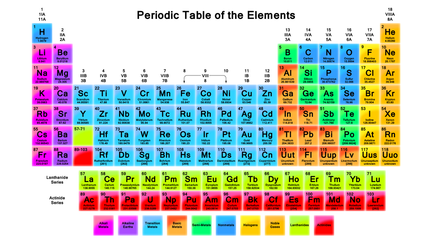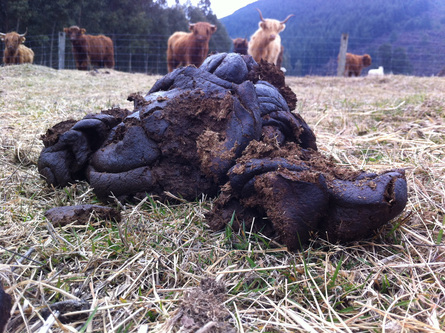chronicles
|
Muntanui Solar Power Station produced its first 1MWh of electricity at precisely 08:00am on Tuesday 13th August. 1MWh is just under a quarter of our annual usage. It has taken one third of the year to produce it, but we will be producing well above our requirements for the remaining two thirds of the year. It took slightly longer than anticipated originally -- in fact, twice as long, due to it being the middle of winter. Power production is once more on the rise as we head into spring and we are looking forward to being in credit with the power company until next winter. Posted by Farmer Wan
3 Comments
"Now that you've got a freezer, how would you like half a pig?" It's not something you hear every day but around here it's not that uncommon. A friend in the village with a bush block in the Marlborough Sounds shoots a lot of pigs and had offered me one before. I was unable to accept last time because we had visitors coming and no freezer. This time: no excuses. Those of you of a squeamish nature (or any vegetarians) may want to look away and avoid the remainder of this post. I collected the back half of the pig (minus the legs) and returned home to work out what I was going to do with the carcase. I set up our trestle table, covered it in plastic sheeting and found a suitable piece of surplus untreated eucalypt timber to use as a cutting board. I laid out two newly sharpened kitchen knives, a borrowed meat saw, found ziplock bags of a suitable size and stood looking at the bloody mess to work out where to start. Slicing between the ribs seemed to be a good way to go and once that was done it was a matter of using the meat saw to cut through the backbone. Not as easy as it seems, trying to hold on to a slippery hunk of meat sliding around the place, and sawing at the same time. Once that was done I started to see some recognisable cuts of meat - pork chops. I carried on slicing and sawing until all of the chops were done. I then found a couple of juicy looking tenderloins which I was able to cut off quite cleanly. The last pieces of meat worth taking from the carcase were a couple of what could be described as rump steaks, at least that is what I'm calling them. The sum total of the exercise was as follows:
Given that I have had no training or experience I was reasonably pleased with the results. We are yet to taste them -- that will be another post. Next time it will be a lot more real. I will be killing one of our wethers. I'll definitely need some assistance for that one. Luckily, one of our neighbours is a retired butcher and has offered to show me the ropes. Look out for another butchery post in the future. Posted by Farmer Wan
 High school chemistry flashback ... aaargh! High school chemistry flashback ... aaargh! You know that feeling when the dentist is picking through your mouth and not tutting at you and not poking at anything that sends you half out of the chair and you're almost convinced that maybe this time there'll be no work required and you feel all weirdly excited? That's how we felt in early 2012 while we waited for the results of our soil testing. We knew our dirt was acidic and would need liming but had no real idea about all the other elements that make up soil and in what proportions they'd arranged themselves at Muntanui. If we re-visit the dental analogy, it turned out we needed a root canal, a wisdom tooth extraction, three additional one-hour appointments and some serious anaesthetic. The damage
The fix We should've had our soil amendments spread in autumn last year but we kept getting distracted by saffron harvesting and livestock emergencies and Farmer Wan working in Oz, etc. The spreading finally took place this year, on 12 June -- a bit too close to winter but again, there were other priorities. On the day, a nice man rocked up in a big truck, opened a valve in said truck and drove up and down our lumpy paddocks releasing white powder until it ran out. Then he headed away to where his trailer was parked, re-filled, came back and drove around again. This went on for about an hour. The air was so thick with white dust we couldn't see anything else. The tiniest of breezes sent it wafting down the road to our neighbour Helen's place. She later thanked us for the free fertiliser. I was working in the tunnel house at the time, feeling smug because I'd had the foresight to wear a mask. It made no difference -- I still ended up with the worst sinus infection of my life. I was sick for three and a half weeks. So important safety tip, people: when your paddocks are being spread with 18.42 tonnes of bacteria-inoculated fertiliser, go and play somewhere upwind, preferably a few kilometres away. Spring will show us how effective this process has been. We'll probably have our soil re-tested in summer and I'll get to experience that dental chair anticipation all over again. I'm hoping for a quick clean and polish. Fingers crossed.
Posted by Farmer Nik Over the course of a weekend back in May, our minds were blown, our senses were bombarded and we set off on a new farming tangent that will change the way we do things here forever. The catalyst was the New Zealand Biodynamic and Gardening Association's 2013 Conference. Yep, biodynamics. What's that? you ask. Well, it's basically turbo-charged organics; very concerned with building up soil and fertility. It treats properties/farms as unique, living entities, just like the people who inhabit and work on them. Biodynamic teachings also recognise, and allow for, influences coming from outside the planet: not just the sun and moon but also the planets of the solar system and the constellations. Then there's the stuff to do with burying manure-filled cow horns for six months and sticking other stuff in deer's bladders and hanging them in trees, etc.  A nice, big steamer for the compost heap. Thanks, guys! A nice, big steamer for the compost heap. Thanks, guys! So maybe you think that's extremely weird. No worries. Lots of people do. My logical, scientific, atheistic Farmer Wan definitely struggled with some of the more "out there" conference sessions and we met a lovely wine grower who sat scowling with her arms and legs crossed for most of the weekend. The more esoteric the subject matter, the further down in her seat she slumped. Yet all the committed biodynamic practitioners we met and spoke with were grounded, intelligent, practical people. And really nice. And party animals. We made some wonderful new friends at that event. "It doesn't matter if people believe in it or not," a successful farmer and one of New Zealand's biodynamic luminaries told us. "Biodynamics is a system. If people follow it, they'll get results." Alrighty, then. So less than a week later, we'd stirred up our first batch of Preparation 500 and were trundling it around one of our paddocks in a wheelbarrow, spraying it over the ground with a small manuka branch and bickering over the right way to go about it. Not the most auspicious of starts but a beginning nonetheless. The conference set a lot of things in motion for us, with the decision to finally get a tractor being the first. At this stage, I can't see any major conflict between the permaculture design plan for Muntanui and the application of biodynamics for our soil. Neither philosophy is meant to be dogmatic, so they should be able to live with each other. We'll see. Posted by Farmer Nik |
About Ewan and NikiFarmer WanScottish mechanical engineer with a deep and abiding passion for good food. Outstanding cook. Builder of lots of stuff. Cattle whisperer. Connoisseur of beer. A lover rather than a fighter. Farmer NikKiwi writer and broadcaster who hates cabbage, even though she knows it's good for her. Chook wrangler. Grower of food and flowers. Maker of fine preserves. Lover of dancing and wine. Definitely a fighter. Archives
November 2016
Categories
All
|


 RSS Feed
RSS Feed
